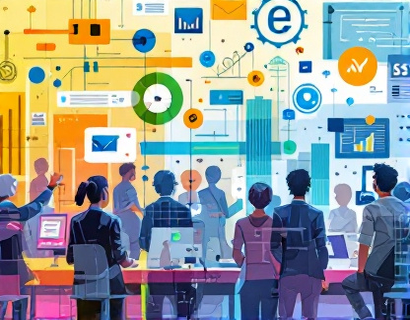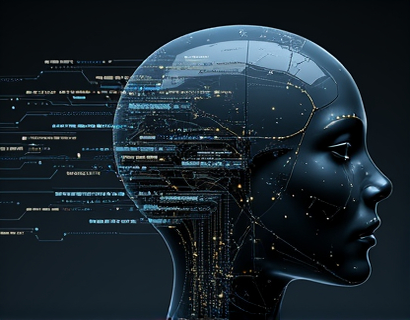Unlocking Cognitive Growth: Transforming Your Learning Journey with Engaging Courses and Resources
In an era where knowledge is power, the pursuit of continuous learning has become more crucial than ever. The human brain, once thought to reach its peak at a certain age, is now understood to possess a remarkable capacity for growth and adaptation throughout life. This phenomenon, known as neuroplasticity, opens the door to endless possibilities for personal and professional development. Engaging courses and resources play a pivotal role in harnessing this potential, offering pathways to cognitive growth and enhanced learning experiences. This article delves into the transformative power of dynamic learning platforms, designed to stimulate cognitive flexibility and expand capabilities, making lifelong learning accessible and exciting.
Understanding Cognitive Flexibility
Cognitive flexibility refers to the brain's ability to switch between thinking about different concepts, and to think about multiple concepts simultaneously. It is a key component of executive function, which encompasses a range of high-level mental skills including planning, problem-solving, and decision-making. Enhancing cognitive flexibility allows individuals to adapt more readily to new situations, learn more efficiently, and maintain mental agility in the face of complex challenges. Engaging in diverse learning activities and exposure to varied perspectives are proven methods to boost cognitive flexibility.
The Role of Engaging Courses and Resources
Engaging courses and resources are designed to captivate learners, encouraging active participation and deep engagement with the material. These tools leverage various teaching methods, from interactive multimedia to hands-on projects, to cater to different learning styles. By incorporating elements of gamification, real-world applications, and collaborative learning, these courses make the learning process enjoyable and effective. The diversity of content available ensures that learners can explore topics that interest them, thereby increasing motivation and retention.
Personalized Learning Paths
Modern learning platforms offer personalized learning paths tailored to individual goals and progress. Through adaptive learning technologies, these platforms assess a learner's strengths and weaknesses, adjusting the content and pace accordingly. This personalized approach not only enhances the learning experience but also ensures that each learner can maximize their cognitive growth at their own speed. The ability to revisit challenging topics and accelerate through familiar material fosters a sense of accomplishment and continuous improvement.
Expanding Capabilities Through Diverse Subjects
The beauty of engaging learning platforms lies in their breadth of offerings, spanning a wide array of subjects from science and technology to arts and humanities. By exposing learners to diverse fields, these platforms broaden horizons and foster interdisciplinary thinking. For instance, a learner interested in business might find value in courses on psychology or design thinking, enhancing their problem-solving skills and creativity. This cross-pollination of knowledge areas not only enriches the learning experience but also prepares individuals for the multifaceted challenges of the modern world.
Lifelong Learning and Personal Development
Embracing lifelong learning is essential in today's rapidly evolving landscape. The concept of lifelong learning extends beyond formal education, encouraging individuals to continuously seek knowledge and skills throughout their lives. Engaging courses and resources support this endeavor by providing accessible and flexible learning opportunities. Whether it's acquiring a new language, understanding complex scientific theories, or mastering a musical instrument, the resources available cater to a wide range of interests and goals. This commitment to ongoing learning fosters personal growth, boosts confidence, and opens doors to new opportunities.
Benefits of Engaging in Continuous Learning
The benefits of engaging in continuous learning are manifold. Cognitively, it helps maintain brain health and delays the onset of age-related cognitive decline. Mentally, it enhances critical thinking, creativity, and emotional intelligence. Professionally, it keeps individuals competitive in the job market, enabling them to adapt to new technologies and industry trends. Socially, it fosters connections and community, as learners share experiences and insights with peers. Overall, continuous learning enriches life in countless ways, contributing to a more fulfilling and purposeful existence.
Creating a Supportive Learning Environment
To fully leverage the benefits of engaging courses and resources, it's important to create a supportive learning environment. This involves setting aside dedicated time for learning, minimizing distractions, and cultivating a growth mindset. A growth mindset, as coined by psychologist Carol Dweck, is the belief that abilities can be developed through dedication and hard work. Embracing challenges, persisting in the face of setbacks, and seeing effort as a path to mastery are key components of this mindset. By fostering a supportive environment, learners can maximize their potential and enjoy the journey of continuous growth.
Practical Tips for Effective Learning
For those looking to enhance their learning experience, here are some practical tips:
- Set clear, achievable goals to maintain focus and motivation.
- Incorporate varied learning methods, such as reading, watching videos, and participating in discussions, to cater to different aspects of cognitive processing.
- Practice active recall and spaced repetition to improve retention and understanding.
- Engage in regular reflection to assess progress and adjust learning strategies as needed.
- Seek out communities or mentors for support and feedback, enhancing the learning experience through collaboration.
Implementing these strategies can significantly enhance the effectiveness of engaging courses and resources, making the learning journey both productive and enjoyable.
The Future of Learning
As technology continues to advance, the future of learning holds exciting possibilities. Virtual and augmented reality, artificial intelligence, and big data are poised to revolutionize how we access and interact with educational content. These innovations promise to create even more immersive and personalized learning experiences, further breaking down barriers to education. The potential for global collaboration and knowledge sharing has never been greater, paving the way for a more interconnected and informed world.
Conclusion
In conclusion, engaging courses and resources are powerful tools for unlocking cognitive growth and transforming the learning journey. By embracing the principles of neuroplasticity and leveraging the diverse offerings of modern learning platforms, individuals can enhance their cognitive flexibility, expand their capabilities, and achieve their full potential. The commitment to lifelong learning not only enriches personal and professional life but also contributes to a more knowledgeable and adaptable society. As we continue to explore and harness the power of learning, the possibilities for growth and discovery are truly limitless.










































